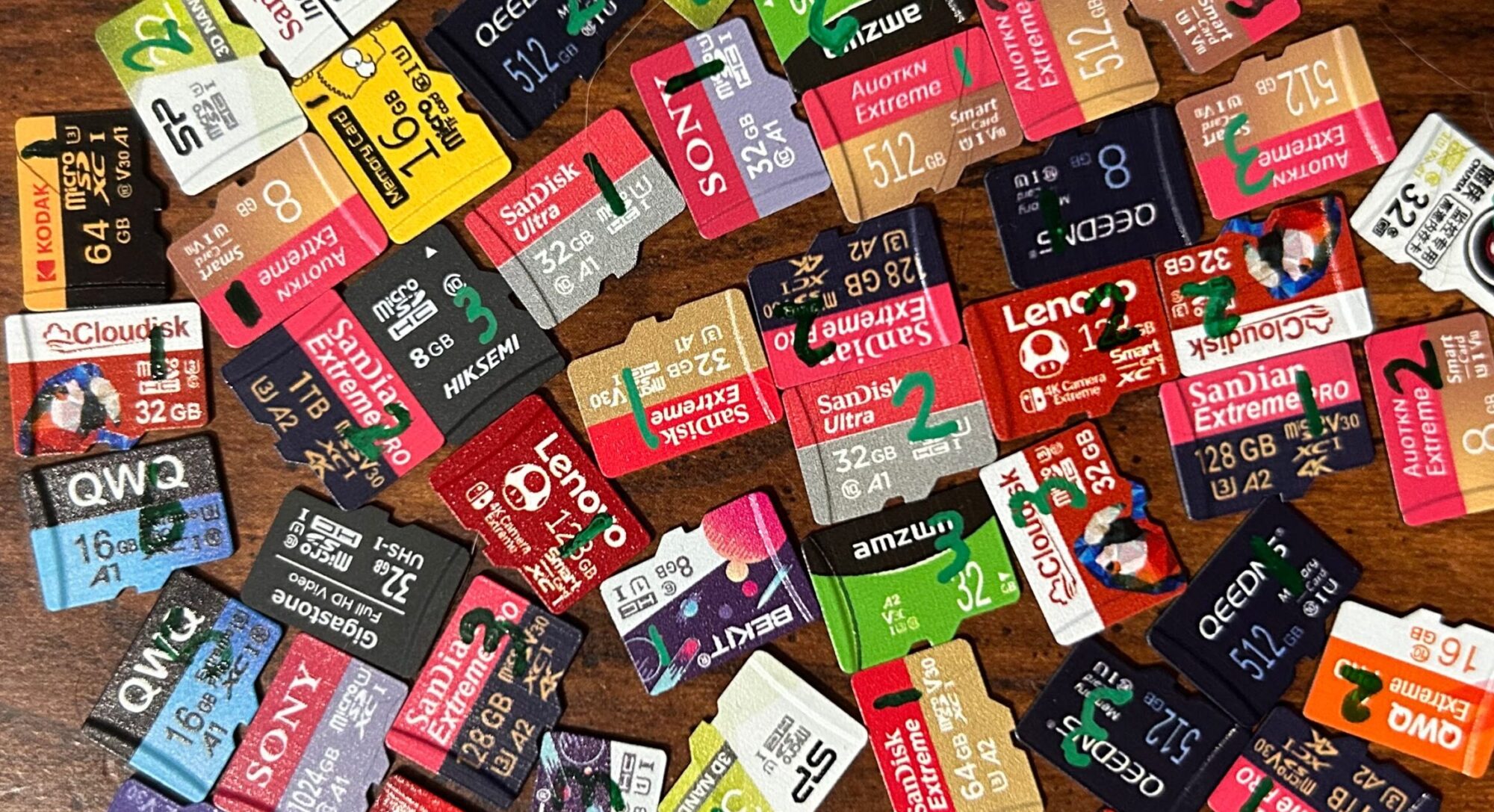SanDian (not to be confused with SanDisk) is a name that came up frequently while browsing though microSD cards on AliExpress. It’s very clear that they were attempting to trick buyers into thinking that they were SanDisk — offering a similar product lineup (Ultra, Extreme, Extreme PRO, etc.), using the same color scheme on their cards, and even copying the stylized “n” and “D” from the SanDisk logo. Given all the similarities, I decided to categorize these as “knockoffs”.
Spoiler: These cards didn’t hold a candle to SanDisk’s.
These cards were fake flash — as I suspected they would be when I purchased them. The actual physical capacity differed between all three samples, but all were around 32GB. Additionally, the manufacturer ID and OEM ID were set to all zeroes — a hallmark of a seller that doesn’t want anyone to know who made their cards for them.
Performance was pretty abysmal, with all metrics being well below average. The single best score — sample #2’s random read speed — only put it in the 25th percentile (as of the time of this writing). Most other measurements were in the bottom 10% of all cards I’ve tested, with sample #3 getting the single worst random write score out of any card I’ve tested so far.
These cards bear the U3, V30, and A2 marks. This is deceptive, as the card’s registers indicate that it doesn’t support any of them. And it shows in the performance test results — no single card scored well enough to qualify for any of these marks. I’ll throw in my standard disclaimer here: my performance testing methods do not align with those prescribed by the SD specification; it’s possible that these cards would have performed better had they been tested under proper conditions — but somehow, I really, really doubt it.
On the endurance testing front:
Sample #1’s first error was a series of bit flip errors, affecting two sectors, during round 102. It made it 869 read/write cycles before it decided to stop responding to commands. By this point, it had been struggling to stay alive: over 40% of the sectors on the device had been flagged as “bad”, and it went through a couple different phases: one where it disconnected itself from the reader multiple times a day (and had to be removed/reinserted), and one where it would experience long strings of I/O errors before just deciding to work normally again. Finally, though, during round 870, it disconnected itself from the reader and refused to start working again afterwards. Here’s what this sample’s progression through the endurance test looked like:
Sample #2’s first error was a series of bit flip errors, affecting about 3,400 sectors, during round 521. The problem became progressively worse over the following rounds of testing, reaching the point where about 4.27% of the sectors on the device had experienced errors. It finally stopped responding to commands during round 619. Here’s the graph of what this progression looked like:
Sample #3’s first error was a series of bit flip errors during round 440. Like the other two, it slowly deteriorated to the point where over half the sectors on the device had been flagged as “bad”. Here’s what the progression for this sample looked like:
So let’s review: they’re fake flash, they performed absolutely horribly, and not a single one made it past 1,000 read/write cycles before completely failing. And while they’re a good value (purely in terms of price per gigabyte), the other issues just don’t justify it. My conclusion? Don’t buy these — they’re garbage.
June 24, 2025

